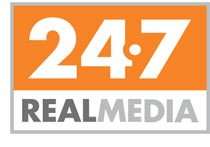 David Moore is the Chairman & Founder of 24/7 Real Media, a WPP company.
David Moore is the Chairman & Founder of 24/7 Real Media, a WPP company.
AdExchanger.com: Doesn’t it follow that there is channel conflict between ad networks and large publisher sites with sales teams? What must ad networks do, if anything, to make sure that publishers do not feel like they’re inventory is being cannibalized?
DM: Sales conflicts never occur with networks if the relationship is established correctly from the beginning. Some large publisher sites do not want their name included in the list of sites that compose the network. This means that their inventory is sold blind and yields a lower return to the publisher. Other large publisher sites recognize that including their name will generate better advertising returns for them and their partners. When this is allowed, the network must carefully inform the advertiser that there is no guarantee of how many impressions are delivered to each site in the network, i.e., that the advertisement is rotated equitably among all the sites in the network. 24/7 has not had a sales conflict in over 10 years.
Do large media companies need to face the fact that they are never going to get the CPMs they once did whether online or off?
Large media companies need to understand that all advertisers are incorporating a “transactional” component into their marketing efforts. As a result, their advertising tends to be more focused on the bottom half of the “sales funnel”. Transactions tend to sell at lower prices on the web as the smaller sites have no other choice for revenue. The “net-net” is that media prices are falling across all media as the Internet’s abundant inventory supply continues to deliver results at lower prices.
Recently the OPA announced that a limited group of large publishers would begin offering three, new oversized media units that would only be available through member sites – not ad networks or exchanges. How does 24/7 Real Media‘s respond to this?
New creative approaches continue to evolve and we encourage this activity. These publishers are looking to develop competitive advantage and this is one of their strategies. Overall, if successful, these new strategies will be embraced by the rest of the industry.
As your fellow panelist, Walker Jacobs of Turner, said at the most recent AdAge Conference, another complaint from large publishers appears to be the “punch the monkey” ads available on ad networks. How does 24/7 ensure brand safety?
It is not the responsibility of any medium to weigh judgment on the creative aspects of an advertisement that an agency/advertiser has produced. Obviously, extreme, X rated or fraudulent advertising is never acceptable to 24/7.
Can you share recent momentum with WPP Group’s 24/7 Real Media as it relates to product development and revenues?
Our goal has always been to use our technology to create competitive advantage for WPP companies. That strategy is working.
How do you see 24/7 Real Media and WPP Group evolving in the ad exchange space?
Exchanges will be an important part of the digital ecosystem and will play a role with 24/7 based on their importance.
Are there too many ad networks? Or, for that matter, are there too many media agencies? Who gets disintermediated down the road?
The market place always determines if there are too few or too many players. That will be the case here.
Henry Blodget of Silicon Alley Insider, who moderated the recent panel with Jacobs, Denise Warren of the The New York Times and Vivek Shah of Time Inc., inferred that large sites are the only destinations with quality content. How do you respond?
The panel had a hard time defining “quality” content. What is quality content? Is it content that’s expensive? Is it content written by someone who you know who has a good reputation? Is it an excellent review of a product by someone you have never heard of before? There are hundreds of other questions that can be asked like this. I think the industry needs to define what quality content is as there seems to be confusion with the definition.
Do vertical ad networks from major media properties such as Martha Stewart post a threat to ad networks like 24/7 Real Media?
Any new digital sales offering is competition to a network; however, it also offers opportunities for partnerships.
How do exchanges evolve from the remnant inventory model to a premium AND remnant future?
What is remnant inventory…. other than a bad industry term? There is excellent unsold inventory that has great value to the advertiser. Through increased audience targeting, this inventory will command higher prices either through exchanges, publishers or companies like ours.
Follow WPP (@WPPonline) and AdExchanger.com (@adexchanger) on Twitter.











